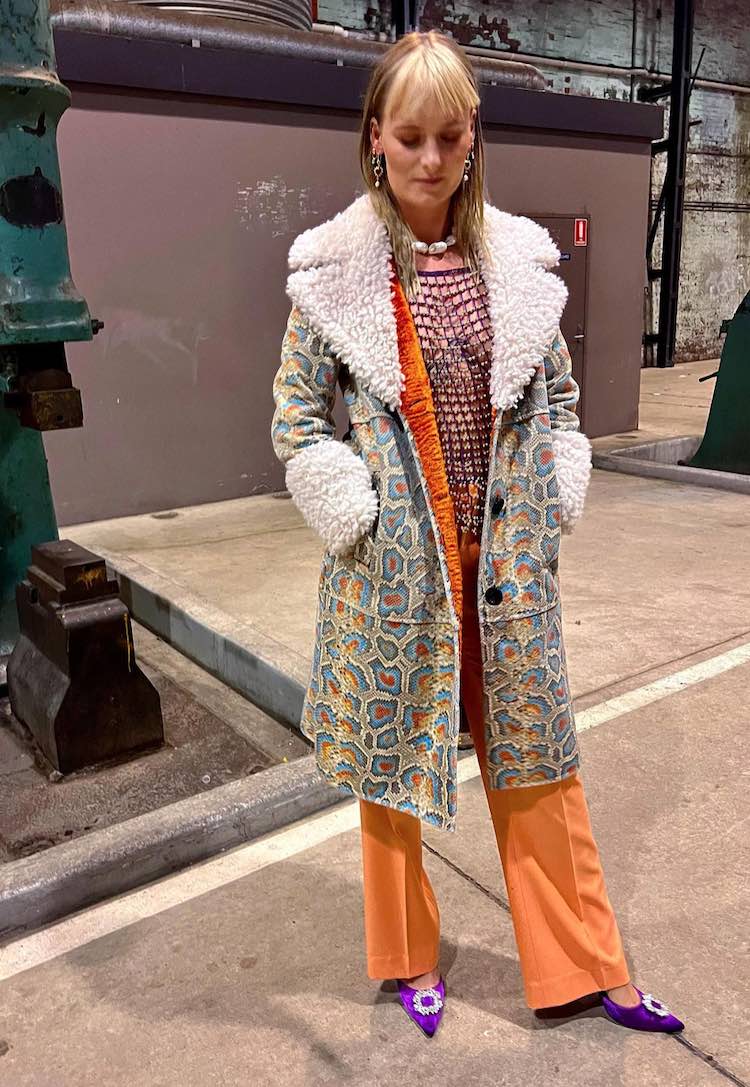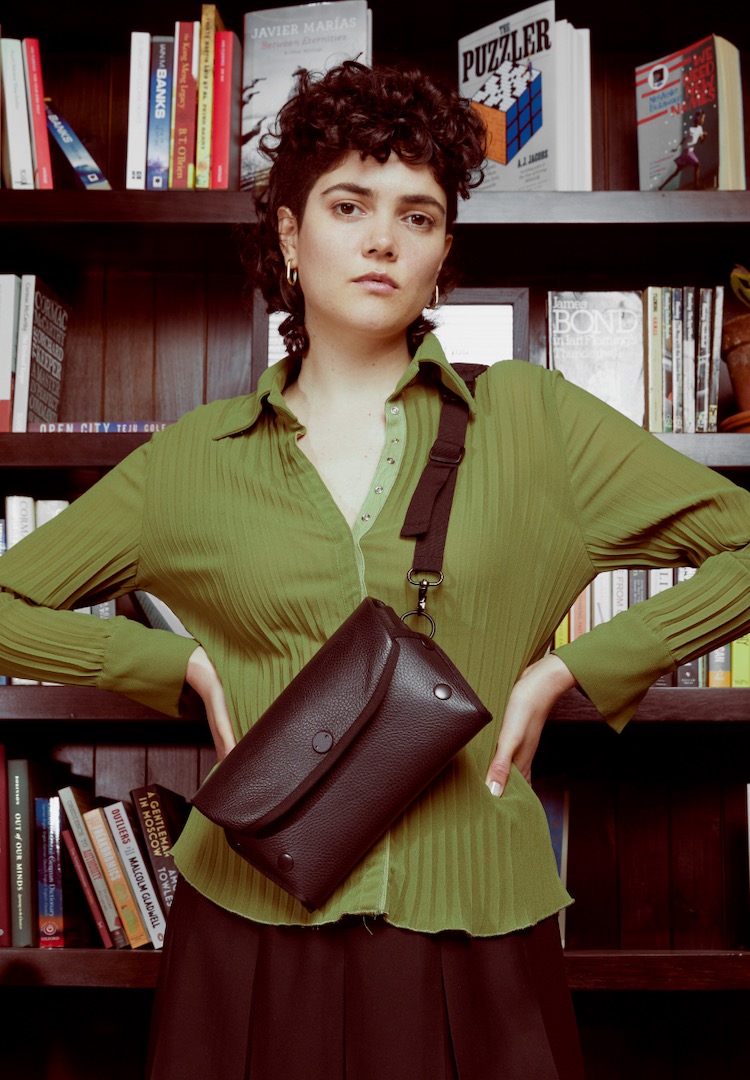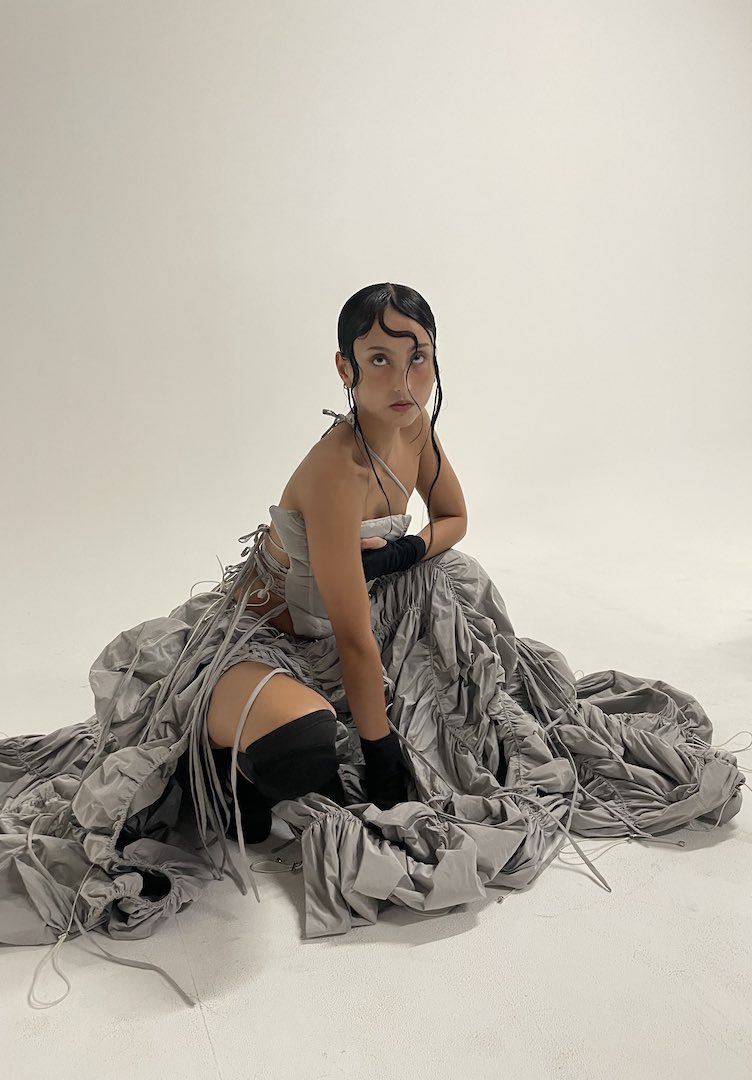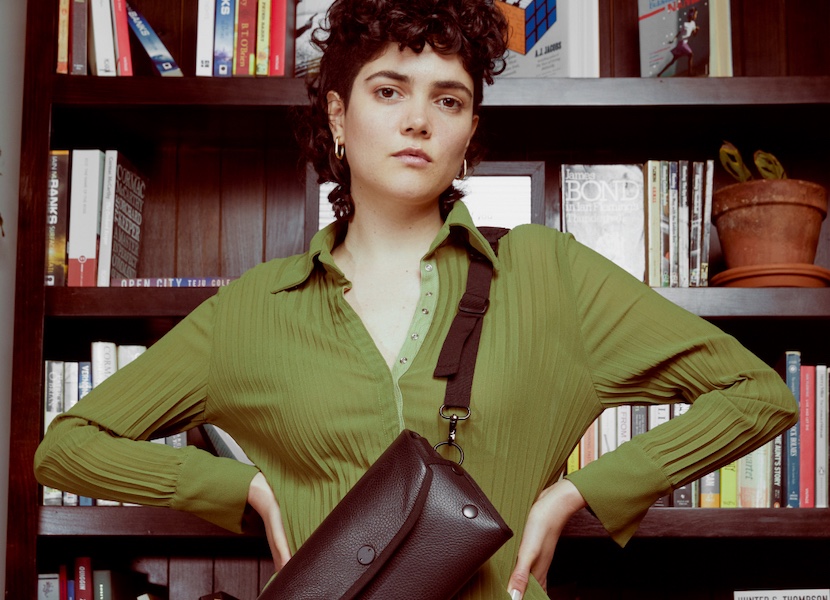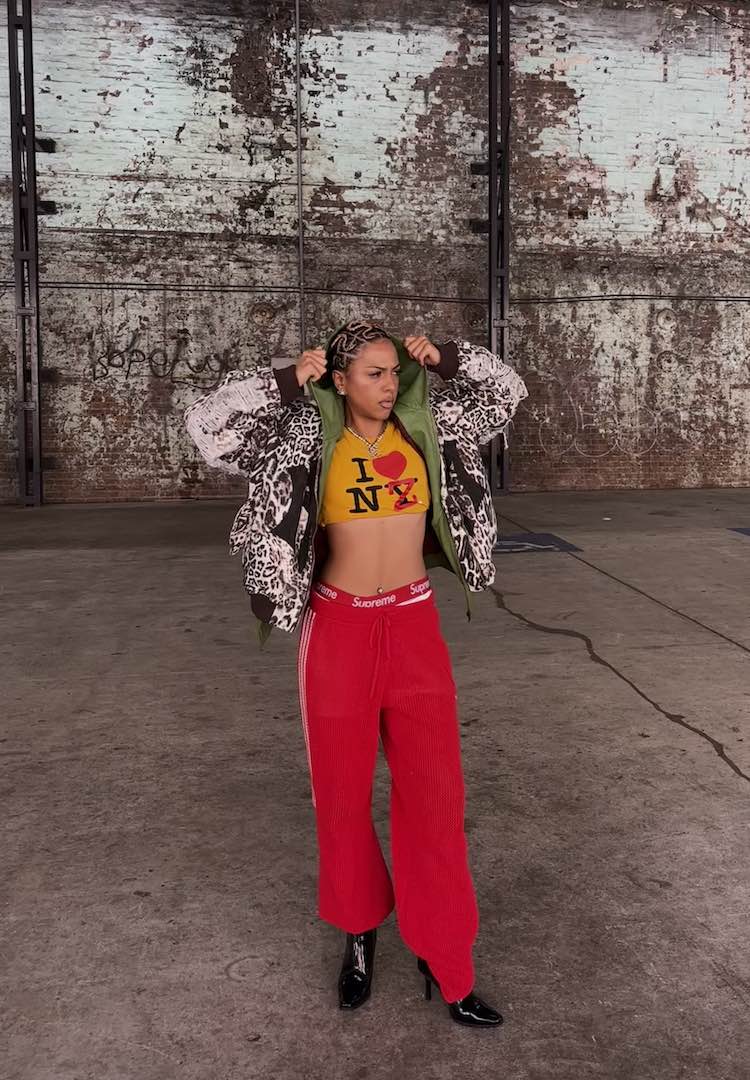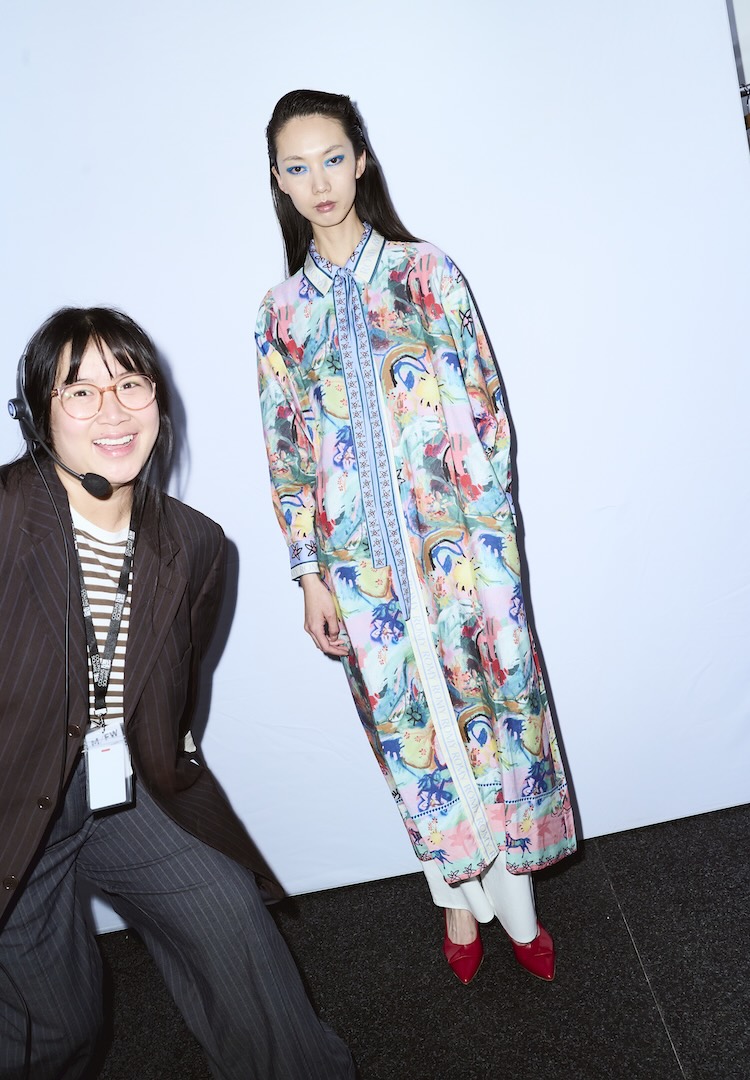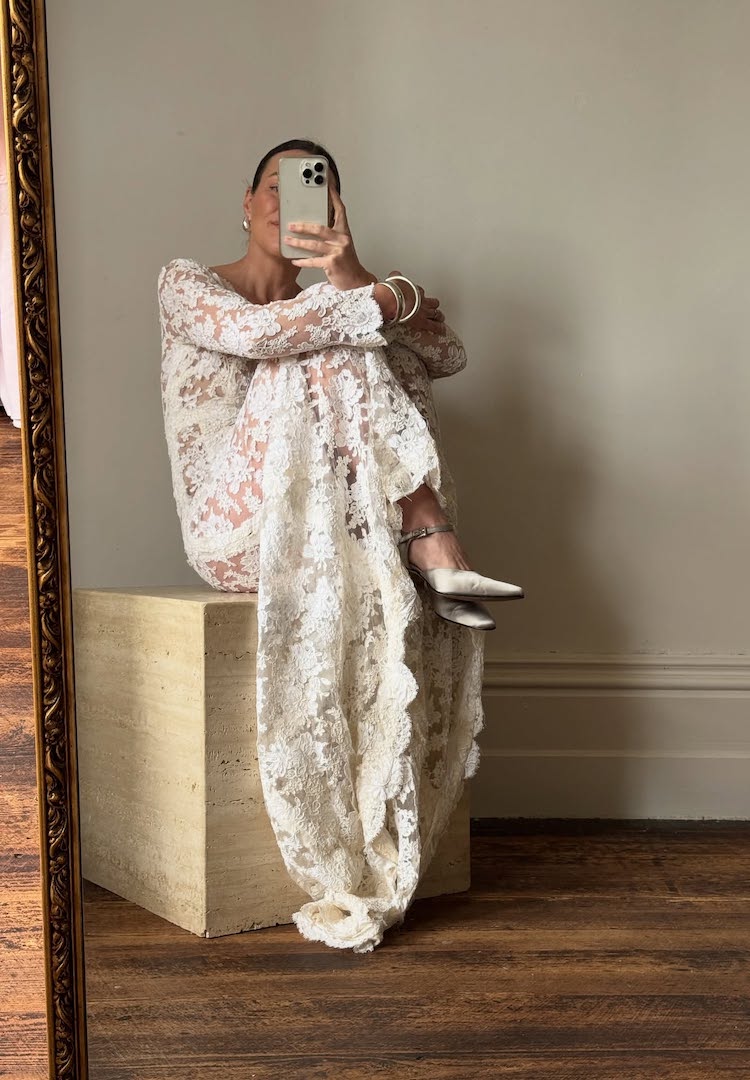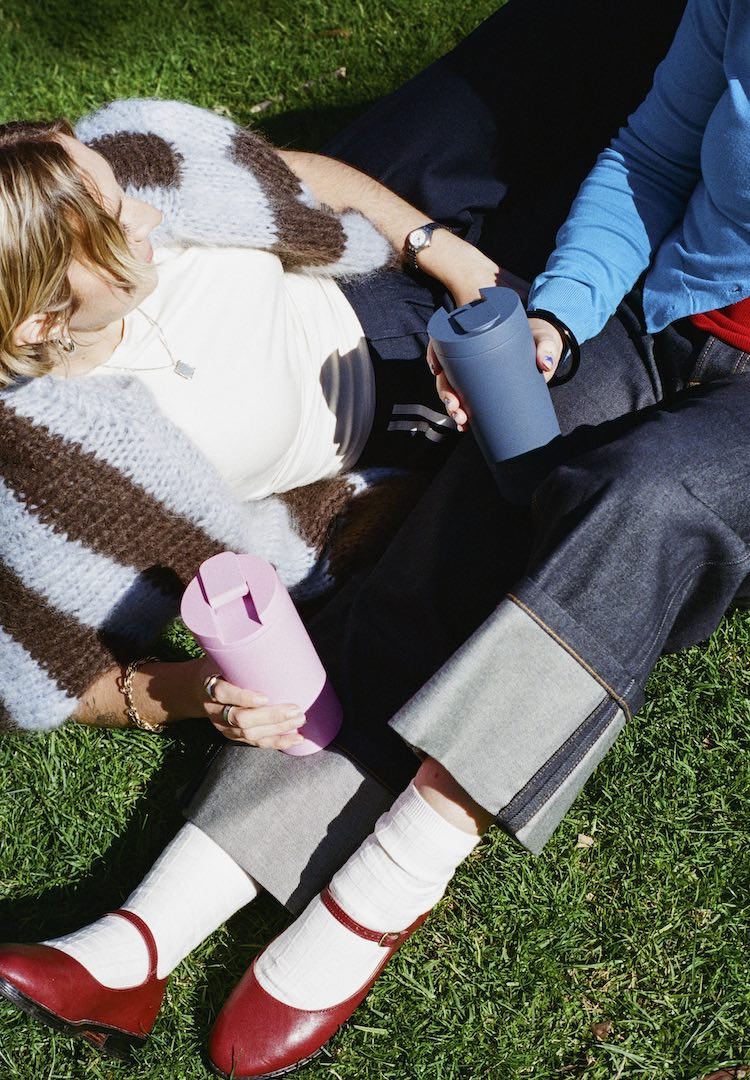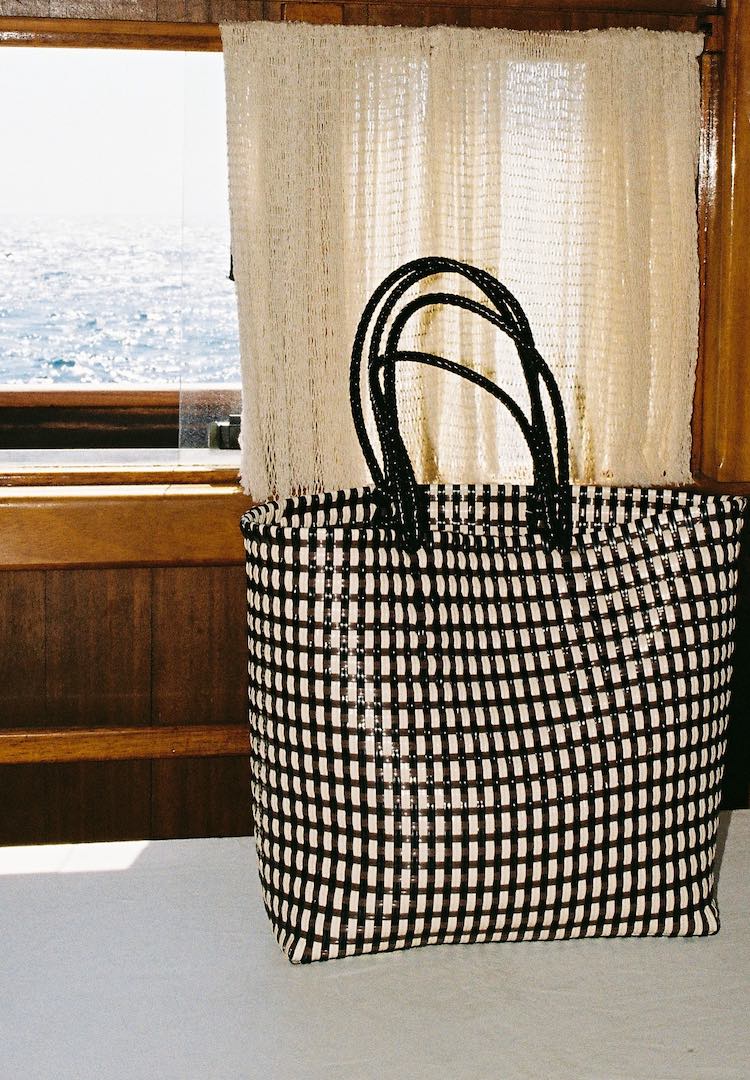Naarm label Into Carry makes functional bags from discarded materials
PHOTOGRAPHY BY MELISSA COWAN
WORDS BY MAGGIE ZHOU
“We recognised that the impact a physical product can have is limited, but the story that a product can tell has an infinite impact.”
The mission of Into Carry is simple: it takes pre-loved materials and turns them into practical accessories. Upcycling can now be found in the manufacturing processes of many independent Australian fashion labels, but Into Carry has swapped out deadstock fabrics for discarded waste. You’ll find soy milk cartons, materials donated from coal mines and even literal rubbish from the streets of Collingwood, where its studio is based.
Driven by environmental angst, short-lived industrial designer Luke Phillips was emboldened to create Into Carry. With the circular economy at the heart of its practices, Into Carry provides a unique offering of bags, pouches, laptop cases, glasses cases and vests.
For more fashion news, shoots, articles and features, head to our Fashion section.
These one-of-a-kind handmade pieces aren’t made to only hold its wearers’ items, but to hold space for sustainability-focused conversations. To get to the heart of Into Carry, we heard more about its journey so far.
Tell us about you. What’s your fashion background?
I come from an industrial design background. That came from an appreciation for objects and materials and a passion for creating and working with my hands. At some stage over my short two-year career as an industrial designer, I realised the way we made things was broken. And that realisation threw me down the rabbit hole of sustainability and circular economies.
I’ve always loved fashion but never thought I would end up in the industry. Fashion is this constant expression of creativity and ideas from a moment in time. The expression of those ideas through different cultures can be a catalyst for change. In a moment where we need radical change in so many areas, that’s a really exciting tool. The bonus is we love it and we love creating things and telling stories through it.
View this post on Instagram
How would you describe your brand to someone who’s never seen it before?
We’re on a mission to build products that live in alignment with the planet. Our main products are small shoulder bags made from upcycled and recycled materials. We use anything from old Converse sneakers to pallet wrapping to craft durable, functional carry-wear. Every piece is designed and made by us in Collingwood and has lifetime free servicing and repairs.
We wanted to grow the local community of sustainability innovations so we opened a zero-waste cafe called Into Coffee. This 50-seat cafe sits in the front of our studio so you can come in and sip on a zero-waste latte while seeing the manufacturing process unfold in the back of the room. From the space, we host circular innovation clubs, social impact meetups and regular sewing classes. Everything we do is focused on changing material relationships.
How did the label get started? Talk us through the process and the challenges.
After [my] environmental awakening, I left the industrial design studio and was deep diving into every sustainable product I could find. I was searching for examples of products or industries that had identified their negative impact on the planet and successfully made changes to operate in alignment. The results were rather unsatisfactory.
View this post on Instagram
From a mortality perspective, this was quite depressing. But from a designer’s perspective, it was deeply motivating and exciting. Every innovative product needed a redesign, every industry needed innovation and every market was ripe for disruption. So, as a naive twentysomething, I thought I would give it a crack and see if we could design products to work in alignment with the planet.
The next two years were a big challenge. I wanted to redesign the way textiles products were manufactured, serviced and disposed of. This took me down some weird roads and some even weirder prototypes. I told all my friends and family I’d quit my job and was going to sell sustainable bags – the results they were then seeing for my ‘progress’ were these Frankenstein hacked-up prototypes that looked like oversized plastic origami.
But eventually, when the prototypes became less ugly, the designs started to make sense and we were able to tell our story. That’s when we launched Into Carry.
View this post on Instagram
What were you trying to achieve from the project at the time?
At the time, we were extremely naive but we did come up with a mission statement that seems to grow stronger each day: “To change our relationships with materials”. That stands today as the driver for all decisions we make. We recognised that the impact a physical product can have is limited, but the story that a product can tell has an infinite impact.
How has this evolved and what are you trying to communicate through the brand now?
In the early days, we were very design focused. Particularly on the modular component of the bags and how that solves problems for urban commuters. We realised we couldn’t compete with the existing market for practical carry-wear. Those bags are made offshore with radically lower production costs so they’re able to affordably add much more detail to their product. Because we handmake our bags in Melbourne, every stitch adds a big cost so every stitch is very considered.
This forced us to rethink what Into Carry was. We wanted the bags to be a talking point, something to provoke conversation about sustainability. So we started playing with experimental materials on our smaller bags and documented it on Instagram. We only need an A3 page size piece of material to make a Min Sidebag (our shoulder bag) so it opened up a lot of new waste streams to play with.
View this post on Instagram
Where did the name come from?
The name was originally In2. Because our bags are modular, the idea was you can split one into two, and two into one. After a while we realised this was cleaner and nicer with correct spelling, so we shifted to Into Carry. As a stroke of luck, a year later we made our first bag from the leather of a couch that was about to go into the bin. We called it Couch Into Carry. ‘Material’ Into Carry then became the name of our material experiments.
What are you most proud of in your work on your brand?
The community. We opened Into Coffee as part of our mission to change material relationships. What we didn’t anticipate was the community that would form around it. There are so many inspiring people driven to create sustainable change and seeing them connect with like-minded people has been a real pleasure. It gives [us] a lot of hope for the challenges we all face in working towards a sustainable future.
View this post on Instagram
What do you wish you knew when you started?
My business partner Rob Rankin has a saying: “I’ve got a violin, you’ve got a barn, let’s put on a show”. I’ve learnt perfection is the enemy of progress. You can usually refine something once it’s out in the world but you’re never going to know what to refine unless you release it into the wild.
I think there are a lot of amazing designers crafting away in their bedrooms with big ideas but they’re not ready to put them out into the world because they’re not perfected yet. Just do it. Put it out there, people might hate it, but they might love it. There’s only one way to find out.
View this post on Instagram
Who do you think is most exciting in the Australian fashion scene right now?
Some of our favourite brands at the moment include Nu Form, Reborn by HoMie and R.Sport. In their own ways, they’re all driving for sustainable change. They all also have enthusiastic creativity and wild attention to detail in common. We need to all learn that making sustainable choices doesn’t mean you have to sacrifice quality or style and these brands are proving that.
What about the Australian fashion scene needs to change?
I would love to see more Australian fashion brands open their doors and invite their customers into the personalities and processes inside their businesses. Inviting customers behind the scenes of a business has huge potential to deepen the value and relationship a customer has with the products they buy from that business.
Too often we’re buying things but we don’t feel true ownership over them. It’s passive consumption and a great way to shift that passive ownership and deepen the relationship a customer has with the product they’ve purchased is to involve them in the story.
How can we buy one of your pieces?
We have a website where you can browse the carry-wear we have in stock. We have a retail section at Into Coffee too. We love meeting our audience in person; where you buy the bag from at Into Carry is two metres from where it was made.
Take a closer look at Into Carry (as well as Into Coffee and its classes) here.

